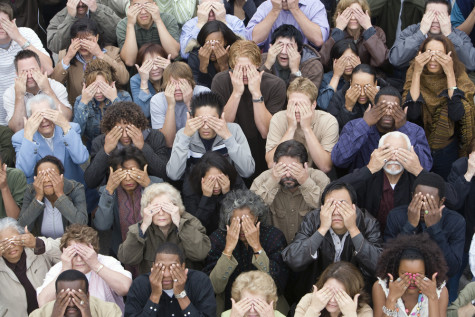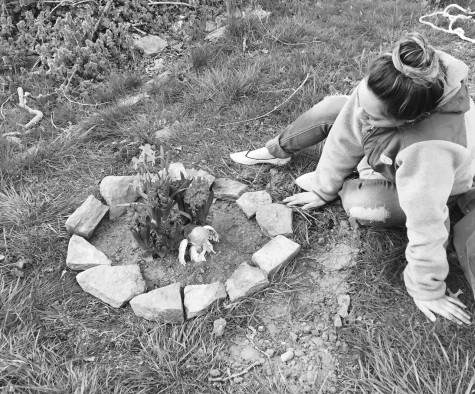
This is a bit unusual, but I’ll start by asking you to watch this video.
It’s not long, but I should warn you that it might upset you. It did me, which is why I am writing about it. It’s from a traffic cam trained on an intersection in Shandong Province, Eastern China.
Here’s what it shows, in case you refused your viewing assignment: A man in a hooded jacket on a motorbike is idling in the far right lane of a wide, mostly empty intersection. He rolls forward slightly, then begins to cut to the left without looking for oncoming traffic. A car zooms up behind him before he can get across the lane. The car hits the rider, hard. The man rolls through the air, then crashes to the ground, sliding across the pavement. When he stops, he is curled in a ball on his side. His bike has skidded off to the left. He doesn’t try to get up or even writhe in pain. He doesn’t move at all. The car that ran into him continues forward, the way a tennis player follows through on a swing after a solid hit.
Just after the hit-and-run, a white van appears from the bottom of the screen and passes the man two lanes over. Another car makes a left. Two people on bicycles—one pulling a food cart—plus someone on a motorbike, successfully make the same left turn the victim was trying to make, crossing over from the far right curb. A car heading toward the man from the other way cuts in front of him to turn left. Another motor-biker veers left just before reaching the victim. A jogger crosses the street right to left; he appears to glance at the victim but doesn’t miss a beat and nearly steps on the broken bike as he makes his way. The man on the ground remains deathly still.
Traffic picks up. As the lights change all around, a stream of cars comes into view from the right. A red one, a black one, a silver one. Another black and two white ones follow. Each rolls through the intersection, vying for position, and each comes within ten feet of the injured man, some quite close. At least two of them have to swerve a little to avoid him. A huge city bus approaches. It, too, manages to squeak by without pause. It’s as if these drivers are passing an empty box, a lump of trash. Nothing to see here.
The video cuts off after 1 minute and 23 seconds, so we don’t know what finally happens to the man lying in the street. In that time, more than 40 vehicles drive close enough to the man and his wrecked motorbike to get a good look. Zero people stop and get out of their cars or off their own bikes. Zero people even seem to slow down to assess the situation. Whether anyone called for emergency help isn’t clear, but no ambulance arrives before the video ends.
In the comments section of the video, one Chinese author writes that this is common behavior in his country. I’ve seen it myself: Traffic in Chinese cities moves in chaotic ways, and with scores of motorbikes packed on the roads zipping in and out between cars, so it isn’t surprising when someone goes down. From a taxi in Beijing, I watched as dozens of drivers and riders squeezed around a woman who had been bumped from the side and was on the ground. She didn’t appear seriously hurt, but I was still amazed that no one reached out to help.
Of course, I know that this is not just a Chinese problem, and also that there are many, many Chinese people who would stop to help. There are heroes in every culture, and there are those who refuse to get involved no matter how horrific the scene.
But another commentator writes passionately that China has been ruined and the values of individuals stolen away by government policies: “Chinese people were not like that previously. The reason is very straightforward and obvious: The Cultural Revolution. Mao destroyed all the beautiful values the traditional Chinese culture originally holds. The direct consequence now is the moral crisis. There’s just a cultural vacuum in the country at the moment. People are growing money-centered and selfish.”
I consider this latter point. Is it selfishness? Or, in a sense, is it the opposite? In China and other countries where collectivism is the official, and only acceptable, practice, might there be a subconscious dismissal of an individual’s plight if that person isn’t known to you? The individual is, after all, not the unit of importance in these societies; growing up under the cloud of an all-powerful state means your suffering, and that of those around you, doesn’t count. One might argue that totalitarianism, by attempting to refashion human nature and rob citizens of their sense of self, leads to a diminished sense of moral responsibility toward their fellow humans.
Hit and runs happen shockingly often, all over the world. In the U.S., where numbers are much lower than in China, still some 11 percent of car accidents involve a hit and run, according to AAA. In 2015 one in five pedestrian deaths resulted from a hit-and-run accident, reports the National Highway Traffic Safety Administration. Incidents in cities like New York and Los Angeles are particularly high, at thousands per year (not all fatal).
Psychologists have tried to break down and explain hit-and-run behavior. A common theory is that the flood of fear, guilt, anxiety, and other emotions can be so overwhelming that a driver may be unable to control the urge to flee. Plus, the culprit may be under the influence of alcohol, which makes logical and moral thinking even more difficult. A driver may also simply fear legal ramifications, especially if he or she is an unlicensed driver or illegal immigrant. Regardless, under such duress, our most primitive “fight or flight” response comes into play, and flight can, in that instant, win out as the better way to survival.
But does this explanation apply when a person not responsible for the incident ignores or leaves the scene? We’ve all done it, convinced ourselves that someone else has already called for help, even without hearing a siren in the distance, to avoid having to give something precious—our time, our physical or emotional help—to a stranger. Meanwhile, we are drawn to look long and hard at tragedy that isn’t ours, feeling little more than relief that the victim isn’t one of our own. So perhaps it isn’t surprising that in a society not given the tools for individuality—even punished for showing it—a man on the ground is not a priority for passers-by.
Such videos give us so much to think about, and something urgent to resolve. What of societies that are blind to the individual, whether because of selfishness or an ingrained inhumane ideology? How can caring for our fellow humans be anything but absolutely necessary and right if we are to move forward as a species? No philosophical analysis is satisfactory or gives permission to leave a man dying in the street, though it happens every day, everywhere, to men, women, children. How do we rediscover our humanity, and can our instinct to use it overcome the powers that turn us away?
…..
 Recently, I went to the funeral of a neighbor’s dog–a 12-year-old, 1/2 blind Chihuahua named Cookie—that had died the day before. A week prior he’d gotten into a fight with a bigger dog and had been badly injured, inside and out. Despite the Chihuahua’s advanced age, the owner, Rose, had done all she could to save him, including emergency veterinary care she couldn’t afford. But once his organs began to fail, she realized it was most humane to put him to sleep.
Recently, I went to the funeral of a neighbor’s dog–a 12-year-old, 1/2 blind Chihuahua named Cookie—that had died the day before. A week prior he’d gotten into a fight with a bigger dog and had been badly injured, inside and out. Despite the Chihuahua’s advanced age, the owner, Rose, had done all she could to save him, including emergency veterinary care she couldn’t afford. But once his organs began to fail, she realized it was most humane to put him to sleep.
When I arrived, Rose’s brother was finishing digging an impressively deep grave—perfectly square to hold the decorative box that was Cookie’s coffin. I joined Rose and her brother and sister, plus their kids, Rose’s best friend, and another neighbor, for the burial. I brought potting soil because Rose said she had some flowers and wanted to create a little garden above the pup. Cookie was gently wrapped in his favorite blanket inside the box. The family’s other dog raced around the yard, excited by the all the activity; he scrambled over the pile of dirt and leaped over the hole, and we couldn’t help but laugh at his poorly timed exuberance.
Rose’s brother and her friend lowered the box down using a rope from the shed. We all helped add back the dirt and then planted the flowers on top. Rose perched a little ceramic angel in front and surrounded the area with stones. She sat looking at it for a few minutes, rearranging the rocks to her liking.
I keep thinking of the effort Rose went to to create this funeral for her pet, and the emotion and effort she poured into Cookie in his final days. I am a big-dog person, never a great fan of the tinier breeds. But this family adored an old, blind Chihuahua just as much as I love my wolf-like beasts, and the dog received a fitting farewell. Does this seem irrelevant to the issue of humans stepping up to help other humans in need? Not to me. We’ve been told over and over that all life is precious, and we act on this in countless diverse ways. Yet it’s a lesson we sometimes forget when society needs it most, when the life in question is that of a stranger.
—-
Top photo: Shutterstock
Bottom photo: After the funeral, by the author
Oh, Jennie! Thank you so much for this beautiful article. You will always be the warm delightful girl I knew so long ago. Love to you and your family.
So very sweet and a familiar funeral for children to actually have…usually, please God, with a parent or older friend in attendance. Better yet, invite friends over for cookies.